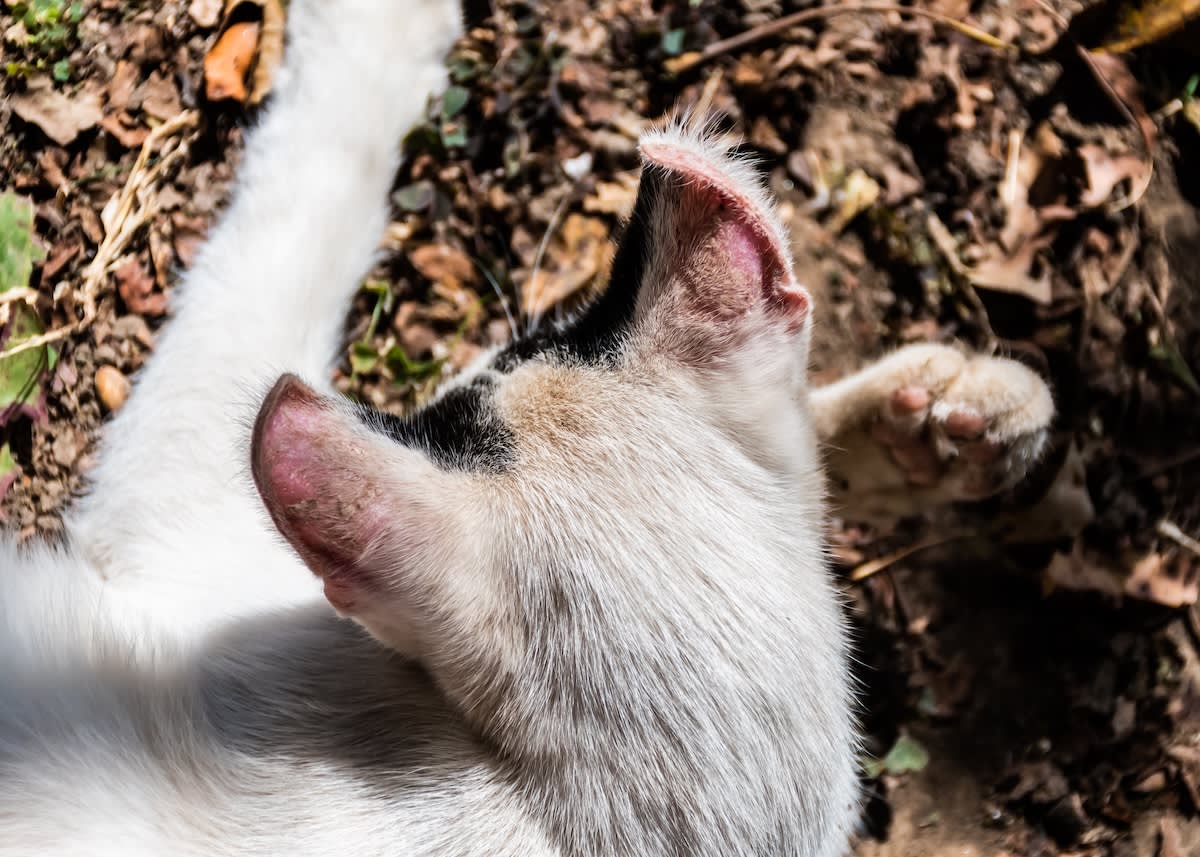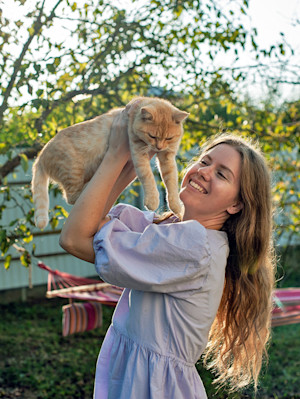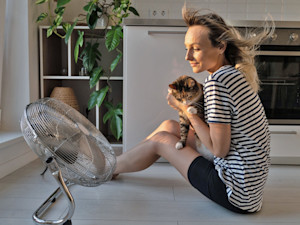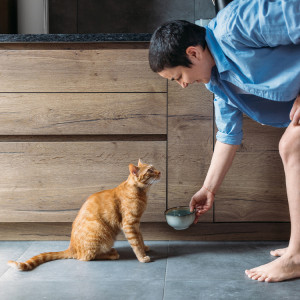How Can I Tell if My Cat is Sunburnt?
A little sun purr-tection might not be a bad idea
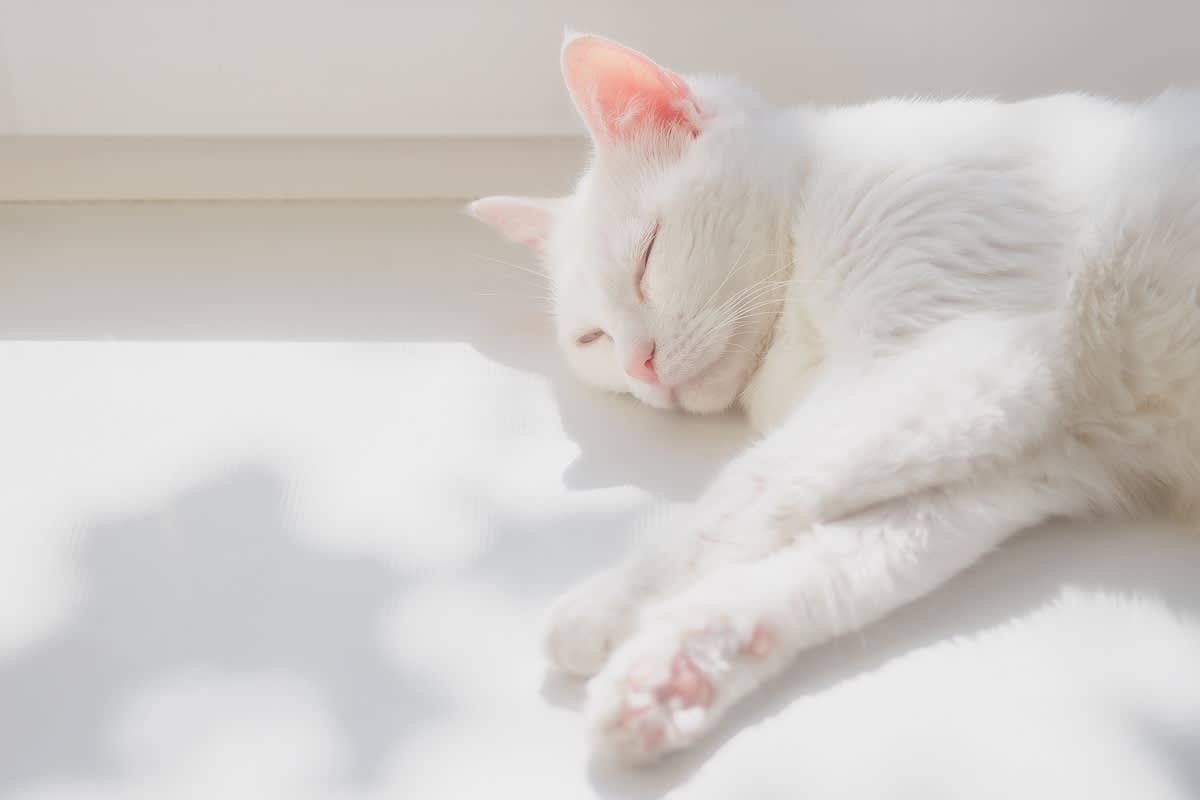
Share Article
In this article:
Signs your cat is sunburnt Cats most at risk Treating cat sunburn Prevent cat sunburn
With the planet seemingly doing its best to achieve equatorial climate levels everywhere over the past few years, sun safety is becoming more and more important. But it’s not just ourselves that we need to think about; our pets are at risk too. As the pet parent in the house (yep, that’s you, the responsible one), it‘s up to you to make sure your cat is protected. Cats don’t understand the dangers related to the sun, its effects, or ways to stay safe. And, to be honest, even if we tried to tell them they wouldn’t listen anyway. So, it is of the utmost importance that you know what to look out for because yes, cats can get sunburnt too, and I’m seeing more and more cats with skin cancer in my vet surgery. Unfortunately, their fur can only protect their skin from so much.
Read on here to know what to monitor, which of our pets are most at risk, what to do when you spot the first signs of damage, and what you can do to prevent or reduce sun damage.
Signs your cat is sunburnt
So, what are the signs of sunburn (or, as we vets like to call it when we’re feeling fancy, solar dermatitisopens in new tab) in cats?
Red, inflamed skin
Yep, the classic red sunburn can show up on your feline friend as well. The skin becomes hot and pinker or red as the skin is damaged by the UV rays of the sun. These rays penetrate and alter the DNA itself within the skin cells. This causes the cells to try to protect themselves by sending damage signals bringing inflammation and even more heat to the area. If severely damaged the cells can start to die.
Tender or painful skin
As the skin is damaged and cells start to die there is a pain response and the area that’s burnt is more tender to the touch. Look out for signs of flinching or not enjoying strokes in the usual areas. It may be that your cat is not purring as much as normal or you may get a smack from a paw if the area is too tender. Watch out for any behavioural changes your cat is showing. Are they hiding away more than usual? Ducking their head away from your touch? Or acting more lethargic or grumbly than normal? All of these changes can be signs of pain.
Peeling or flaking skin
If the damage is severe, areas of skin can start to peel or flake away. This can cause further tenderness as the new layer of skin is thinner and more delicate. One extreme reaction to sunburn is the presence of blisters or rashes. If you spot these signs then take the immediate action outlined below and speak to your vet for further treatment.
Hair loss
Any damage to the skin can cause hair loss both from the acute trauma but also through chronic changes. Patches where your pet gets sunburnt regularly, even minor ones, can become sparse with hairs which sometimes don’t grow back if the hair follicle is damaged.
Which cats are most at risk?
All cats can get sunburnt but there are some that are more at risk than others. Unpigmented skin is more likely to get burnt as it has very little protection. This means areas of pink skin such as the nose, around the eyes and ear tips are more at risk of sunburn. This is particularly the case for lighter coloured cats, those with patches of white fur or cats who are fully white all over.
Areas of little-to-no fur are more at risk due to lack of shading by the fur. So check the ears, nose, around the eyes and the belly for those that enjoy sunbathing on their backs! Some cats lack hair due to alopecia or other skin or endocrine issues, look out for areas that could catch the sun and treat the underlying issue accordingly to minimise risk.
Sunburns are not the only issue we need to consider with sun damage, skin cancer can occur in cats and is commonly found on ear tips of white cats. This is due to chronic sun damage or cell turnover from DNA damage increasing the risk of cancer. The most common skin cancer in cats is called squamous cell carcinoma. This can look like little scabs at first, or singed or curling ear tips, but can progress into ulcerated and painful lesions. White cats are 13 times more at riskopens in new tab than non-white cats to develop this cancer. If you spot any of these signs or any discolourations to the ear tips or nose, let your vet know as the sooner it is caught the better. Luckily, it is often curable if caught and treated early.
What to do if your cat has sunburn
If you spot any signs of sunburn on your cat you need to start treatment as well as taking step to prevent further damage occurring.
Step 1: remove your pet from sunlight, into the shade or inside to prevent further damage.
Step 2: examine your pet’s skin for redness, blisters, rashes or any other changes. Look for signs of pain or reluctance to be touched.
Step 3: cool the area with a cold compress or running water. They may not like this one, so only do as much as they will let you. One tip is to dampen the area with a cloth then sit them near a fan which is pointed close to, but not directly at, them to help cool the area. You can apply cat-safe topical skin cream or, if the area cannot be licked, aloe vera..
Step 4: monitor the sunburn and contact your vet if any of these signs are seen:
Blisters, rashes or discharge from the area.
Signs of pain.
Redness not resolving.
Other symptoms appear such as not eating, lethargy or vomiting/diarrhoea.
Step 5: prevent further damage (more on that below) and limit access to direct sunlight until fully resolved.
If you only see a little pinkness or redness you can start treatment at home and just monitor. But if any blisters, rashes or pain to the touch occurs then only perform the initial treatment of cooling the area before contacting your vet for further treatment. If the damage is this severe, it will be too painful and risky to fully treat at home. Pain relief, along with other treatment such as antibiotics, may be warranted.
How to prevent sunburn in cats
Prevention is always better than treatment. Try to restrict access to the outdoors in the sun during the hottest part of the day throughout the summer but especially during heatwaves. Try to only let your cat out during the evenings and mornings, this is when they are most active so should suit them well. It is tricky to persuade sunbathers who like to soak up the sun during their afternoon nap time to stay inside but stick with it, no matter how many angry meows you get.
Apply cat-safe sunscreen to vulnerable areas before they head outside. Use ones that are designed specifically for pets, as some ingredientsopens in new tab in human sunscreens are not suitable for pets. For example, those with zinc oxide or acetylsalicylic acid listed as ingredients can cause vomiting, breathing issues and gastrointestinal ulcerations.
Some good cat-safe sunscreens to try are the Aniwell FiltaClear and FiltaBacopens in new tab along with Dermoscent SunFreeopens in new tab sunscreen. Have a look at what’s on the shelf at your local pet shop, if you can’t find any pet-specific sunscreen you can opt for a fragrance-free gentle babies sunscreen. But make sure to check the ingredients first and if you‘re unsure ask your vet to be sure it’s safe.
Although this might all sound a bit scary, with sunscreen prevention, timing of outdoor play and monitoring for any issues your cat can enjoy summer days safely. Which is handy, because hot weather doesn‘t look like it’s going anywhere anytime soon.
References
C. Richard Dorn, D. O. N. Taylor, Robert Schneider, Sunlight Exposure and Risk of Developing Cutaneous and Oral Squamous Cell Carcinomas in White Catsopens in new tab, JNCI: Journal of the National Cancer Institute, Volume 46, Issue 5, May 1971, Pages 1073–1078
Paterson, Sue. “Cutaneous Sun Damage and Skin Protection: A Focus on FiltaClearopens in new tab.” The Veterinary Nurse, vol. 10, no. 2, Mar. 2019, pp. 90–95,.
Pet Poison Helpline. “Sunscreen Toxinsopens in new tab.” Pet Poison Helpline, 15 June 2023.
Resnick, Alexander Werner. “Top 5 Sun-Induced Skin Lesions in Dogs.opens in new tab” Clinician’s Brief, 9 June 2014.

Dr Josephine Corrick, BVMSci, BSc, MRCVS
Dr Josephine Corrick, BVMSci, BSc, MRCVS is a veterinary surgeon based in the south of Scotland where she has been since graduating from the University of Surrey. She enjoys working in general practice treating small animals. Her particular interests include diagnostic imaging and the treatment of wildlife.
Having found a passion for veterinary medicine after doing a degree in Equine Sports Science she still enjoys including horses in her life by spending time with her highland ponies. Alongside her clinical work, she helps run a smallholding caring for rare breed sheep and exploring the Scottish countryside with her young Cocker Spaniel.
Related articles
![]()
How To Create a Cat-Safe Garden
Green fingers at the ready
![]()
Should My Kitty Be An Indoor Or Outdoor Cat?
All the info you need to make this crucial decision
![]()
How to Keep Your Cat Cool and Prevent Heat-Stroke
Summer safety is vital for cats
![Person with short hair putting water bowl on floor for cat]()
8 Ways to Get a Cat to Drink Water
Their desert-dwelling roots might resist hydration, but these tricks can help

